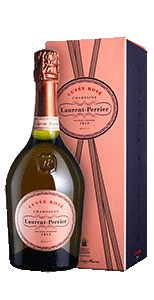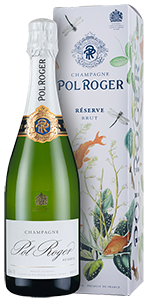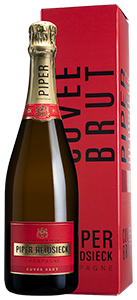Filter by
- Made from gently pressed, perfectly ripe Pinot grapes – a multi-award-winning zesty, pink Champagne£59.99 per bottleSAVE £20.00
- The world's most recognisable Champagne, 94-pt Veuve is also among the best. Rich, toasty, generous£47.99 per bottleSAVE £1.01
- Bollinger, “one of the ‘greats of Champagne” (Hugh Johnson), renowned for its rich, toasty stylefrom £41.99 per bottlewhen you mix 12+SAVE £204.12
- Perfectly balanced, special cuvée Champagne from historic Grande Marque Laurent-Perrier£64.99 per bottleSAVE £11.00
- Magnificent, 92-point Grande Marque Champagne – gorgeously concentrated fruit and fine bubbles£42.99 per bottleSAVE £12.00
- 100-point, 26th iteration of Grand Siècle, Laurent-Perrier’s vision of Champagne perfection£190.00 per bottle
- Superb Pinot-based Champagne with 30% reserve wine from the historic house of Piper-Heidsieck£32.00 per bottleSAVE £7.99
- 91-point Champagne from an historical jewel in the heart of Côte des Bar. Rich and elegant£27.99 per bottleSAVE £7.00
- A delicious pink fizz from a 200-year-old family Champagne house. Candied fruit, citrus and richness£23.00 per bottle
- Fresh, refined Ayala Champagne – crisp, elegant and beautifully poised£27.99 per bottleSAVE £10.01
- The world’s most iconic Champagne. Glorious now, this 95-point 2015 vintage will age brilliantly£200.00 per bottleSAVE £10.00
- From top Champagne house Piper Heidsieck, this is a fine, 93-point Vintage fizz, worth savouring£52.99 per bottleSAVE £17.00
- Fine, Gold-medal, Pinot Noir-focused Vintage Brut from a 160-year-old family-owned Champagne house£49.99 per bottleSAVE £10.00
- Beautifully balanced, ripe, citrusy and mineral-fresh Réserve Brut from an ambitious Champagne house£44.00 per bottleSAVE £5.99
- A fine celebration Champagne in half bottle. Great fruit finesse, brioche notes and gentle bubbles£12.49 per bottleSAVE £2.00
- A fine celebration Champagne. Great fruit finesse, brioche notes and gentle bubbles£28.99 per bottle
- Deep tangerine pink hue, stream of creamy bubbles and tangy orange and berry fruit – dream Champagne£29.99 per bottleSAVE £10.00
- Vintage Champagne from a historic estate – pure Chardonnay with creamy richness£49.99 per bottle
- Magnificent Blanc de Noirs Champagne from the great house of Bollinger, with a deserved 94 pointsfrom £85.00 per bottleSAVE UP TO £25.00
- Superb Champagne full of finesse with a harmony of lively fruits and a rich roundness£39.99 per bottle
- Superb, 96-point, Trophy-winning Blanc de Blancs Champagne – pure fruit elegance with toasty length£49.99 per bottle
- With 96 points, this flagship cuvée from top Champagne house Deutz is fresh, intense, complex, longfrom £120.00 per bottleSAVE UP TO £45.00
- All mineral-fresh Chardonnay and long lees ageing for complexity in this fine Champagne in magnum£80.00 per bottle
- £525.00 per bottle






























